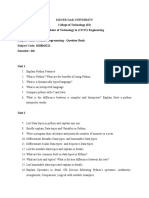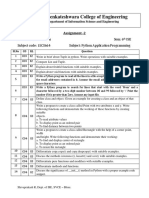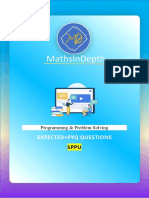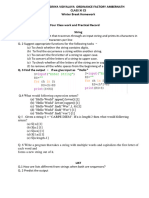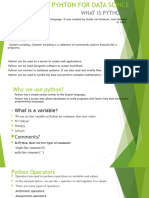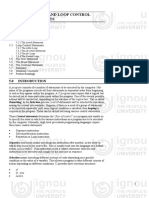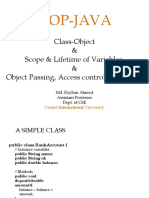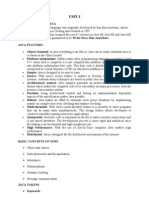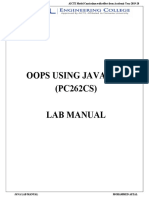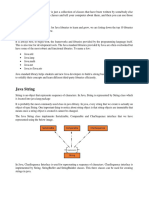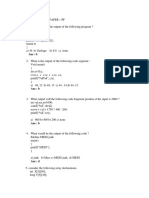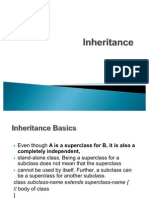0% found this document useful (0 votes)
95 views4 pagesKTU Python Theory Questions
The document contains a comprehensive set of theory questions related to Python programming, covering topics such as strings, functions, lists, tuples, dictionaries, objects and classes, data modeling, inheritance, abstract classes, and exception handling. Each section includes explanations, programming tasks, and case studies to illustrate key concepts. It serves as a study guide for understanding fundamental Python programming principles and practices.
Uploaded by
yiu873209Copyright
© © All Rights Reserved
We take content rights seriously. If you suspect this is your content, claim it here.
Available Formats
Download as PDF, TXT or read online on Scribd
0% found this document useful (0 votes)
95 views4 pagesKTU Python Theory Questions
The document contains a comprehensive set of theory questions related to Python programming, covering topics such as strings, functions, lists, tuples, dictionaries, objects and classes, data modeling, inheritance, abstract classes, and exception handling. Each section includes explanations, programming tasks, and case studies to illustrate key concepts. It serves as a study guide for understanding fundamental Python programming principles and practices.
Uploaded by
yiu873209Copyright
© © All Rights Reserved
We take content rights seriously. If you suspect this is your content, claim it here.
Available Formats
Download as PDF, TXT or read online on Scribd
/ 4



